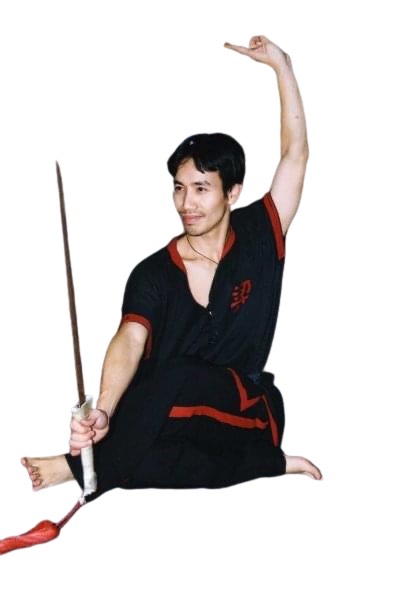Wing Chun and Tai Chi: The Similarities and Differences in These Traditional Chinese Martial Arts
By Maurice Novoa a master under the Yuen Kay Shan, Ip Man and Pan Nam lineages.
Introduction:
Wing Chun and Tai Chi are two popular Chinese martial arts that have gained recognition worldwide for their unique characteristics and health benefits. While both arts are rooted in ancient Chinese culture and share certain principles, they differ in their focus, techniques, and applications. In this article, we will explore the similarities and differences between Wing Chun and Tai Chi, shedding light on their origins, training methods, and practical applications.
I. Origins and Philosophy
a. Wing Chun:
Wing Chun, a martial art created by five elders of the Shaolin monastery, was developed as a practical self-defense system. Its origins can be traced back to the turbulent times of the Qing Dynasty in China. The philosophy of Wing Chun centers around conserving energy, using minimal movements, and relying on techniques that work regardless of one’s size or strength. It emphasizes speed, sensitivity, and simultaneous attack and defense.
b. Tai Chi:
Tai Chi, also known as Tai Chi Chuan, is an internal martial art that originated in ancient China. It was developed as a holistic system encompassing martial arts, health cultivation, and philosophy. The origins of Tai Chi are attributed to Zhang Sanfeng, a Taoist monk. Initially, Tai Chi was practiced as a martial art for self-defense. However, over time, it evolved to include a strong focus on meditation, energy cultivation, and the integration of mind, body, and spirit. Tai Chi’s philosophy emphasizes harmony, relaxation, and the cultivation of internal energy (Qi).
II. Training Methods and Techniques
a. Wing Chun:
Wing Chun training is structured and practical, with a focus on close-quarters combat and real-world self-defense situations. Practitioners learn a series of forms, such as the Siu Nim Tao, Chum Kiu, and Biu Jee, which develop fundamental techniques, structure, and sensitivity. Wing Chun training emphasizes the development of proper body mechanics, speed, and reflexes. The practice of partner drills, such as Chi Sao (sticky hands), enhances sensitivity, coordination, and the ability to read and respond to an opponent’s movements. Sparring and application training allow practitioners to test their skills and adapt them to different scenarios.
b. Tai Chi:
Tai Chi training consists of slow, flowing movements and deep breathing exercises. Forms, such as the Yang Style or Chen Style, are practiced to cultivate relaxation, balance, and a smooth flow of energy. Tai Chi training emphasizes the integration of mind, body, and breath, promoting internal awareness and mindfulness. Practitioners focus on correct posture, body alignment, and the coordination of movements with deep, relaxed breathing. Push hands exercises, a form of controlled partner practice, develop sensitivity, balance, and the understanding of applying Tai Chi principles in a dynamic context.
III. Practical Applications and Modern Perspectives
a. Wing Chun:
Wing Chun’s practical applications are evident in its focus on close-range combat, efficiency, and directness. The style is known for its rapid-fire punches, simultaneous attack and defense, and close-quarters techniques. Wing Chun’s practicality lies in its ability to neutralize opponents quickly and efficiently, regardless of size or strength differentials. It is particularly effective in close-quarters confrontations, where maintaining a strong defensive structure and delivering precise strikes to vital targets can provide a significant advantage. Wing Chun’s effectiveness in self-defense has been demonstrated through its application in real-world scenarios and its popularity in various martial arts circles.
b. Tai Chi:
Tai Chi’s modern perception has shifted towards its health-promoting aspects, such as stress reduction, relaxation, and improved physical well-being. The slow, deliberate movements of Tai Chi promote balance, flexibility, and overall body awareness. However, it is essential to note that Tai Chi retains its martial roots. Some schools and practitioners still focus on the martial aspects of the art, preserving its original combat applications. Grandmaster Felix Leong, among others, emphasizes that the original Tai Chi style was developed for fighting. He suggests that the style changed over time as practitioners deviated from the traditional training methods and focused more on the health and meditative aspects of the art.
Conclusion:
Wing Chun and Tai Chi are distinct martial arts with unique philosophies, training methods, and applications. While Wing Chun places emphasis on practical self-defense, directness, and efficiency, Tai Chi incorporates a holistic approach, integrating martial arts, health cultivation, and philosophical principles. However, it is important to recognize that both arts have evolved and adapted over time, reflecting the preferences and interpretations of different practitioners and lineages. Whether one chooses to practice Wing Chun or Tai Chi, both arts offer profound physical, mental, and spiritual benefits. The decision ultimately depends on personal goals, preferences, and the desire to explore the rich traditions and philosophies of Chinese martial arts.

